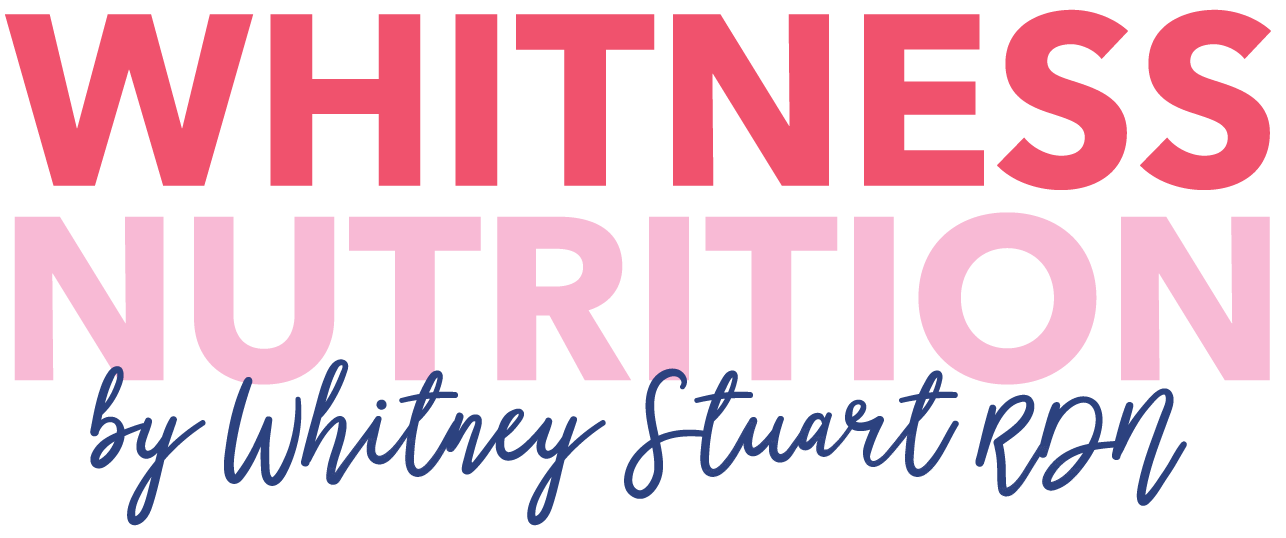Should I take creatine; a comprehensive guide to creatine for women
If you’re a woman curious about improving your energy, hormonal health, fertility, cognition, or fitness, creatine may be a low-risk, high-reward supplement to consider—especially if you’re vegetarian, vegan, or eat limited animal protein (Your creatine intake from food is likely much lower!). Creatine for women is a common topic that comes up during my nutrition consults. I’m usually a late adopter on supplementation, and keep my intake of them very low, but I jumped on the creatine bandwagon almost 3 years ago. I’ve seen a lot of benefit in my muscle mass, athletic performance and recovery.
Now that there’s been more hype about it, I wanted to share why I take it, what the research says, and why many of my female patients have added it to their regimen! Remember: creatine is not going to make a difference if you aren’t routinely strength training, eating well, focusing on animal-based protein and lots of plant diversity. Supplementation is just to fill in the gaps!
Should I Take Creatine? A Comprehensive Guide to Creatine for Women
💡 What Does the Research Say About Creatine for Women?
- Creatine is safe and well-studied, with decades of research showing benefits for muscle strength, energy metabolism, and cognitive function.
- Women naturally have lower creatine stores and consume less dietary creatine than men.
- Supplementation supports health at every stage of life—from menstrual cycle support, to pregnancy, to menopause and healthy aging.
- The most studied and effective form is creatine monohydrate, taken consistently at 3–5 grams per day.
Should Women Take Creatine? The research on creatine
🧬 Creatine and Mitochondrial Function
One of the most exciting emerging areas of research is the role of creatine in supporting mitochondrial health. Mitochondria are the “powerhouses” of the cell, responsible for producing ATP via oxidative phosphorylation. Creatine’s ability to rapidly regenerate ATP through the phosphocreatine system provides a secondary, immediate buffer system to support energy production—particularly during times of cellular stress or high demand. Research suggests that creatine may stabilize mitochondrial membranes, reduce mitochondrial DNA damage, and enhance mitochondrial efficiency, particularly in metabolically active tissues like the brain, heart, and ovaries. In women, mitochondrial dysfunction has been implicated in conditions like PCOS, endometriosis, and age-related cognitive decline, making creatine’s role even more compelling as a targeted metabolic support strategy.
🧠 Creatine’s Role in Mental Health and Mood
Mood disorders disproportionately affect women, particularly during periods of hormonal fluctuation such as postpartum, the luteal phase, and perimenopause. Several studies have found a connection between low brain energy availability and depressive symptoms—especially in those with treatment-resistant depression. Creatine may help bridge this gap. Research has shown that creatine supplementation can increase phosphocreatine levels in the brain, support neurotransmitter balance, and reduce symptoms of depression and anxiety, particularly in women. A 2020 randomized controlled trial found that creatine monohydrate (5g/day) significantly improved outcomes in women with major depressive disorder when combined with SSRI treatment, suggesting a synergistic role in brain energy metabolism and mood regulation.
🌙 Creatine and the Menopause Transition
As women transition into perimenopause and beyond, declines in estrogen significantly impact skeletal muscle mass, mitochondrial function, bone health, and cognitive resilience. This hormonal shift is associated with sarcopenia, insulin resistance, and increased risk of cardiometabolic disease. Creatine supplementation during this life stage has shown promise in preserving lean muscle mass, improving strength, and supporting glucose metabolism. Furthermore, creatine may counteract the mitochondrial dysfunction and oxidative stress that often accompany hormonal decline. A 2021 review in Nutrients emphasized that creatine could serve as a “metabolic buffer” to maintain performance and vitality in aging women, potentially delaying or mitigating the effects of menopause-related decline.
🧪 Future Directions and Clinical Potential
The therapeutic potential of creatine in women’s health is immense but underexplored. Clinical trials that stratify by sex, hormonal status, and reproductive stage are critically needed to better understand the optimal dosing, timing, and delivery of creatine for female physiology. Given its safety profile, affordability, and robust mechanistic support, creatine represents a promising adjunctive therapy for women across the lifespan—from adolescence through menopause and beyond. Whether the goal is enhancing fertility, supporting pregnancy, improving recovery, or protecting cognitive health, creatine’s role as a foundational energy molecule may position it as a key player in the future of women-centered metabolic medicine.
🧪 How to take Creatine?
Creatine monohydrate is the most well-researched and bioavailable form of creatine—and it’s also the most affordable. The standard dosage for long-term benefits is 3 to 5 grams daily, ideally taken consistently at the same time each day to maintain saturation in muscle and brain tissues. While a “loading phase” (20 grams per day split into 4 doses for 5–7 days) has been traditionally recommended for athletes seeking rapid saturation, it’s not necessary for general health benefits or female-focused goals like hormone balance, fertility, or brain support.
Creatine can be taken with or without food, but pairing it with carbohydrates or a post-workout meal may improve uptake by muscle cells. Importantly, creatine is safe for long-term use in healthy individuals and does not need to be cycled. As with any supplement, ensuring adequate hydration is key—creatine pulls water into cells, which is part of its mechanism for improving cellular energy.
Looking for a trusted supplement that’s third-party tested, clean, and clinically backed?
👉 Shop my favorite creatine options here.
These are the products I personally use and recommend to clients for supporting muscle health, metabolism, and cellular energy—especially during periods of hormonal change or high stress.
Related: 7 Best Foods for Hormone Balance
💊 Creatine brands for women
I only link to products that are:
- Clinically backed
- Third-party tested for purity
- Free from unnecessary additives or fillers
- Trusted by healthcare professionals
Whether you’re focused on muscle recovery, mental clarity, or overall energy, creatine can be a game changer in your wellness routine.
The number one question patients ask me is “Is creatine safe for your kidneys?”
First of all creatine and creatinine are not the same thing.
Although creatine supplementation increases blood levels of creatinine, which is a waste product used to assess kidney function. This has raised concerns about its potential impact on kidney health. However, numerous studies show that both short- and long-term creatine use is likely safe for people with healthy kidneys, even at high doses (>10 g/day), though long-term studies at high doses are limited.
For people with suboptimal kidney function (e.g., mild kidney disease), short-term creatine use also appears safe, but there’s less research on long-term safety in this group. Creatine may cause water retention, so individuals on diuretics for kidney issues should use caution. The elevation in creatinine from creatine doesn’t indicate kidney damage but could mask other kidney-related issues.
Creatine is generally considered safe for kidney health in most people, but those with pre-existing kidney conditions should consult a healthcare provider, especially for long-term use.
Creatine is more than just a supplement for gym-goers. It’s a critical energy supporter with growing research supporting its role in women’s health. From enhancing muscle recovery to supporting mood and brain health, this small molecule has some mighty benefits. Have questions about creatine, how to take it, or how it fits into your routine? Reach out—I love helping women feel confident in their choices






